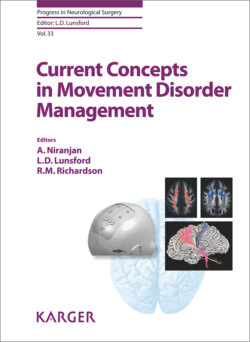Читать книгу Current Concepts in Movement Disorder Management - Группа авторов - Страница 37
Cerebellar and Cortical Abnormalities in Dystonia
ОглавлениеSupport for a cerebellar involvement in dystonia comes from studies in rodent models of cerebellar dysfunction which demonstrated dystonia-like posturing [16]. Dystonia-like posturing can also be produced in mice with chronic cerebellar infusion of ouabain, an inhibitor of Na, K-ATPase activity in cerebellar Purkinje cells [17]. Other pharmacologic interventions directed at the cerebellum have suggested that hyperactivity of cerebellar Purkinje cells may lead to dystonia. Thus, infusions of the glutamate receptor agonists kainate or S-AMPA result in impressive dystonic posturing in mice [18].
Observations in several studies of dystonia patients are consistent with the notion that the cerebellum is important in the pathophysiology of dystonia. Cerebellar involvement in these studies appears to occur in concert with changes in basal ganglia abnormalities, and may depend on cerebello-basal ganglia interactions. Thus, imaging studies [19] have shown that the cerebello-thalamic pathway is structurally abnormal in DYT1 patients, and that the low penetrance of DYT1 can be explained by the presence (or absence) of a secondary lesion of thalamostriatal pathways. Finally, evidence is starting to accumulate showing that at least some cases of human dystonia are associated with subtle structural abnormalities at the level of the cerebellum [20]. Previous studies in rodents have also indicated cerebellar pathology in some forms of dystonia.
Many types of dystonia likely involve reduced cortical inhibition, as suggested by transcranial magnetic stimulation and other studies, or altered plasticity [21].
